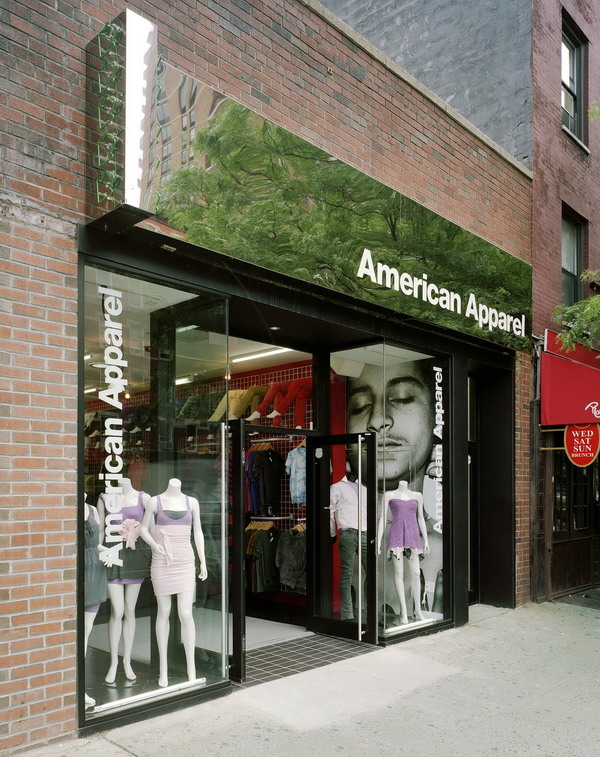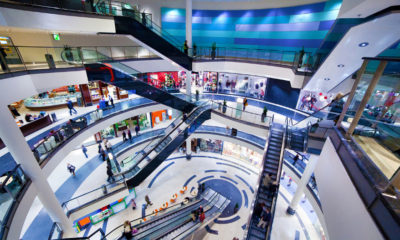While Macy’s, Gap, Sears, Home Depot and Neiman Marcus started off the year announcing layoffs, store closings and capital expenditure cutbacks, H&M said it would open 225 stores in 2009. Forever 21 declared it was taking over the Virgin Megastore in Times Square and turning it into the retailer’s largest store ever, at 90,000 square feet. And Hot Topic and American Apparel reported healthy same-store sales increases.
Why are these fast-fashion retailers – those who appeal to the style-conscious shopper with trendy but inexpensive wares – thriving while so many other retailers are struggling to keep the doors open?
“The importance of buying something to make yourself feel good doesn’t change, even when the economy is bad,” says Darrick Borowski, creative director at Jordan Parnass Digital Architecture (Brooklyn, N.Y.).
Indeed, the National Retail Federation expects the changes in consumer behavior that started in 2008, such as trading down and cutting back, to continue throughout the year. “Shoppers will be seeking value in order to stretch their purchasing power,” says Rosalind Wells, NRF’s chief economist. That puts retailers such as H&M, Forever 21 or American Apparel in a pretty good place. But it’s not just about having a cheap price tag.
Today’s Budget-Conscious Shopper
“Price by itself is not important,” says James Nakaoka, president of J. T. Nakaoka Associates Architects (Los Angeles), which has worked with such brands as Rampage and Forever 21. “True value comes from quality and style and from no one else having that item.”
Nakaoka says Forever 21’s formula of selling a limited number of key items, so that shoppers won’t find the same thing everywhere, has made it stand out. “When women go into a store, it’s not fun for them to see things they already have,” he says. “That’s Kmart’s job.”
Advertisement
While shoppers today are becoming accustomed to sale after sale after sale sign, they also want fashionable products available more often than simply when the seasons change. “Today’s customer wants the ability to change her wardrobe eight times a year,” says Nakaoka. “So if Forever 21 stores look different every time she walks by, it attracts the shopper and makes the store a destination.”
That’s an important point. These retailers may be selling discounts, but their stores are more than no-frills emporiums with little focus on design or aesthetics. “Some places offer similar deals, but the space feels dirty and neglected,” says Jordan Parnass’ Borowski, “so you end up just going in and getting out.”
Borowski works with American Apparel to bring energy and fun into stores by employing simple materials in unexpected ways, such as turning gridwall into a textural artboard. “It’s entertainment,” he says, “and that helps us right now.”
In discussing plans for Forever 21’s newest location in New York, senior vp Lawrence Meyer told The New York Times that the recession won’t dampen the company’s plans to create a fashion department store that’s triple the size of any of its existing stores. “We’ve been doing okay in this environment because we have always given great value to our customers,” Meyer told the Times. “Our stores are exciting and we want to create an exciting environment in Times Square.”
Riding Out the Recession
Sometimes, though, strong product selection and store design can’t save a retailer, especially during a recession.
Steve & Barry’s, another fast-fashion retailer that seemed well-positioned to ride out tough times – with its low-cost trendiness and partnerships with celebrities such as Sarah Jessica Parker – filed for bankruptcy last year. While the company blamed the tough economy, critics say the retailer’s demise was based more on the lack of a solid economic model and too many sweetheart real estate deals in distressed locations.
Advertisement
And Kira Plastinina, the Russian fashion label whose stores have won numerous design awards (for VMSD’s coverage of the RDI awards, click here), announced it was pulling out of the U.S. market for now. Dave Nelson, vp, client strategy, JGA Inc. (Southfield, Mich.), which designed Kira’s U.S. stores, says the decision was based on a shrinking economy and political conflict in Eastern Europe. “Money is hard to get right now, so that makes expansion more difficult,” he says. “Retailers now should be focusing on planning so when the market does turn around, they’re poised to move.”
Borowski says one survival tactic is staying committed to marketing and store design, especially now when new customers are walking into your stores. “This is the time to show them why they should keep coming back, even after the economy gets better,” he says.
One attraction, says Nakaoka, is a retail experience that tugs at shoppers’ emotions, desires and dreams. “Assuming you’ve taken care of the fundamentals and business basics, nothing is more important than the intangibles,” he says. “It’s why you buy something you don’t need.”


 Headlines7 days ago
Headlines7 days ago
 Headlines2 weeks ago
Headlines2 weeks ago
 Headlines2 weeks ago
Headlines2 weeks ago
 Headlines2 weeks ago
Headlines2 weeks ago
 John Ryan2 weeks ago
John Ryan2 weeks ago
 Sector Spotlight1 week ago
Sector Spotlight1 week ago
 Headlines2 weeks ago
Headlines2 weeks ago
 Headlines6 days ago
Headlines6 days ago















